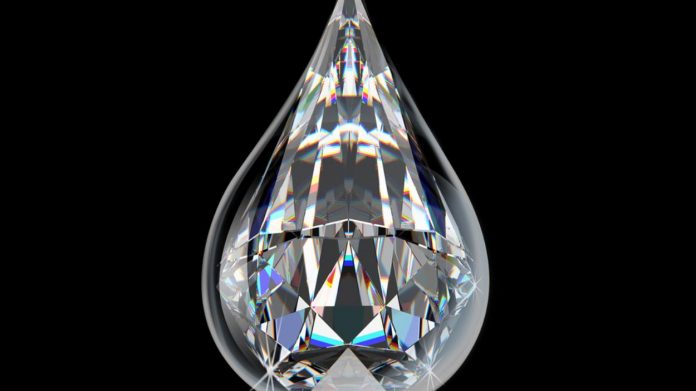Water may be more common than expected at extreme depths within Earth’s lower mantle — approaching 640 kilometres and possibly beyond, a research of diamonds from across the world has found.
A new report published today in Science suggests that pockets of liquid water may exist up to 500 miles beneath Earth’s surface—far deeper that previous estimates. This conclusion was reached after scientists discovered a rare form of crystalized water known as ice VII in diamond samples recovered in Africa and China. These ice VII samples are the first time this form of crystalized water has been seen in nature and led the International Mineralogical Association to declare ice VII as a new type of mineral.
The discovery sheds new light on the how heat, rock, and water interact within the Earth’s mantle, the 1,800 mile-thick layer that accounts for the bulk of our planet’s volume. Scientists hope that a better understanding of the processes at work deep beneath Earth’s surface will result in more accurate geothermal models, which, among other things, can help predict earthquakes with greater accuracy.
Earth’s mantle is divided into four main regions: the upper mantle, the transition zone, the lower mantle, and the D” (D-double prime), which acts as a sort of buffer between the mantle and Earth’s molten core. The mantle is an extreme environment where temperatures range from over 1,000 degrees Fahrenheit near the surface to over 6,000 degrees Fahrenheit in the lower mantle, and pressures reach around 20 million pounds per square inch, compared to roughly 15 pounds per square inch of air pressure at the Earth’s surface.
No geologist is going to be able to withstand these extreme forces to make a journey to the center of the Earth, so they must rely on proxies to study the composition of Earth’s interior. In this respect, diamonds are Earth’s best record keeper since they are the strongest naturally occurring material and are pushed to the surface by magma from deep within Earth’s mantle, where they can be retrieved by geologists.
Although diamonds are made entirely of carbon, imperfections are often introduced into their structure while they are formed. These diamonds tend to be pretty battered from their journey and aren’t worth much as a luxury item, but they are invaluable to geologists wanting to learn about the composition of Earth’s mantle.
More than a dozen diamonds recently uncovered in China and across northern Africa by University of Nevada mineralogist Oliver Tschauner contained ice VII, one of a variety of types of crystalized water that form under the intense conditions found beneath Earth’s surface. Until Tschauner’s discovery, ice VII had only been created in laboratory experiments. Discovering a new naturally occurring mineral is a big deal, but geologists are mostly excited about what this mineral implies—namely, that there may be small pockets of liquid water within the transition zone of Earth’s mantle.
The mantle’s transition zone stretches from around 300 miles to just under 500 miles below Earth’s surface. The region has long been known to be water rich—it contains as much water as all of Earth’s oceans—but most of this water is chemically bound with other minerals. The ice VII discovered by Tschauner and his colleagues is the first direct evidence of non-bound (read: fluid) water this deep in the Earth.
One of the big remaining questions that these samples were unable to answer was how big these pockets of water are.
















Nice to see that new discoveries are verifying what the bible has been telling us all along. “In the six hundredth year of Noah’s life, in the second month, on the seventeenth day of the month, on the same day all the fountains of the great deep burst open, and the floodgates of the sky were opened.”
Genesis 7:11